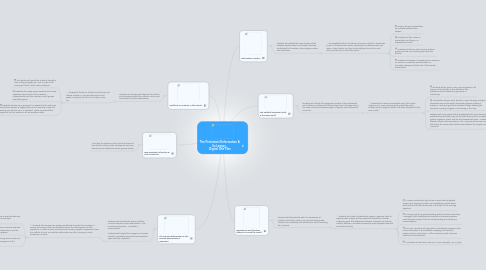
1. Conflict & Corruption In the Church
1.1. Students will identify and describe the conflict and corruption within the Catholic Church and how these led to the Reformation.
1.1.1. Acceptable Evidence: Students will discuss and debate whether or not the reformers should speak out against the Church and why or why not.
1.1.1.1. The teacher will guide the students through a class reading of pages 461-463 to read in the McDougall Littell World History textbook.
1.1.1.2. Students will answer given essential and review questions, which will be first answered independently and then discuss in small groups and whole group.
1.1.1.3. Students will discuss in groups of 6-8 students if the reformers should have spoken out against the Church and why or why not. Each group will then sit in a “fishbowl” center to present their argument and the audience will ask questions after.
2. New Protestant Churches & Their Structures
2.1. What was the structure of the new churches and how did this influence the development of more democratic and federalist secular governments?
3. The Counter-Reformation & The Spanish Reconquista & Inquisition
3.1. Students will describe the Roman Catholic Church’s response to the Reformation – the Counter-Reformation – and what it accomplished. Students will analyze the resurgence of Roman Catholic Christianity during the Reconquista in Spain with the Inquisition.
3.1.1. Students will use resource analysis worksheets to guide their analysis of various resources on the Counter-Reformation, the Reconquista, and the Inquisition, in order to draw conclusions and create a graphic organizer on how the Catholic Church survived the Reformation and the 1000 year Muslim occupation of Spain.
3.1.1.1. Teacher will model how to evaluate web site documents using document analysis worksheet.
3.1.1.2. Students will do worksheets on several web site documents on the Counter Reformation and the Spanish Reconquista and Inquisition.
3.1.1.3. Students will compare findings and use them to create a mind map on the resurgence of the Catholic Church.
4. Reformation Leaders
4.1. Students will identify the major leaders of the Protestant Reformation and analyze how they contributed to formation of new religious ideas and institutions.
4.1.1. Acceptable Evidence: Students will create a digital or handmade poster of a Reformation leader, describing the characteristics and ideas of each leader, and how those affected their actions and their contributions to the Reformation.
4.1.1.1. Teacher will give presentation on Protestant Reformation leaders.
4.1.1.2. Students will take notes on presentation by filling in an organizational chart.
4.1.1.3. Students will discuss and compare charts in groups and then as a whole groups with the teacher.
4.1.1.4. Students will answer 6 comprehension questions on clickers or individual white boards as a formative assessment at the end of the teacher presentation.
5. The Catholic/Protestant Split & the New World
5.1. Students will identify the geographic divides of the Protestants and Catholics in Europe, and how analyze how that played out in the New World as Europeans began to explore and colonize the Americas.
5.1.1. Students will create an annotated map of the world religions circa 1650, showing both graphically and in writing how the religious divides in Europe translated to the New World.
5.1.1.1. Students will be given a Tree Map Organizer to fill during a short lecture on the definitions and differences of the different (major) sects in Christianity.
5.1.1.2. The teacher will give each student a map of Europe and go to an interactive map online which shows the religious divides of Europe in 1560 and guide the students through labeling the countries, creating a legend, and coloring in the map.
5.1.1.3. Students will use a packet with the websites that have interactive maps, a description of the websites they will need to go to, the tasks they need to complete for each of the websites – graphic organizer charts, and the final assessment piece - creating a world map which depicts Christian denominations in the Americas and Europe circa 1650 with a short essay describing the cause-effect relationship between the religions of the Europe and the Americas.
6. Missionaries and Christian Influence Around the World
6.1. Students will describe the work of missionaries of medieval and early modern era, and how they spread influence of Christianity and affected the world, including the Americas.
6.1.1. Students will create a classification graphic organizer chart to organize their analysis of the people and causes for Christian missionary work, the differences between Protestant and Roman Catholic diffusion, and where missionary work happened and was successful and why.
6.1.1.1. 1) Lesson introduction will include a quick teacher-guided analysis of a drawing of Father Serra baptizing a Native baby, which will lead to the introduction of the topic of the learning objective.
6.1.1.2. 2) Teacher will do a guided reading with the students from their McDougall Littell textbook with essential and review questions used along the way to check for understanding and clarify any misconceptions.
6.1.1.3. 3) In pairs, students will complete a classification organizer chart of the information in the textbook, analyzing the elements - people, places, and success - of the missionary work of Roman Catholics and Protestants.
6.1.1.4. 4) Students will do lesson closure of “You Complete Me” in pairs.
